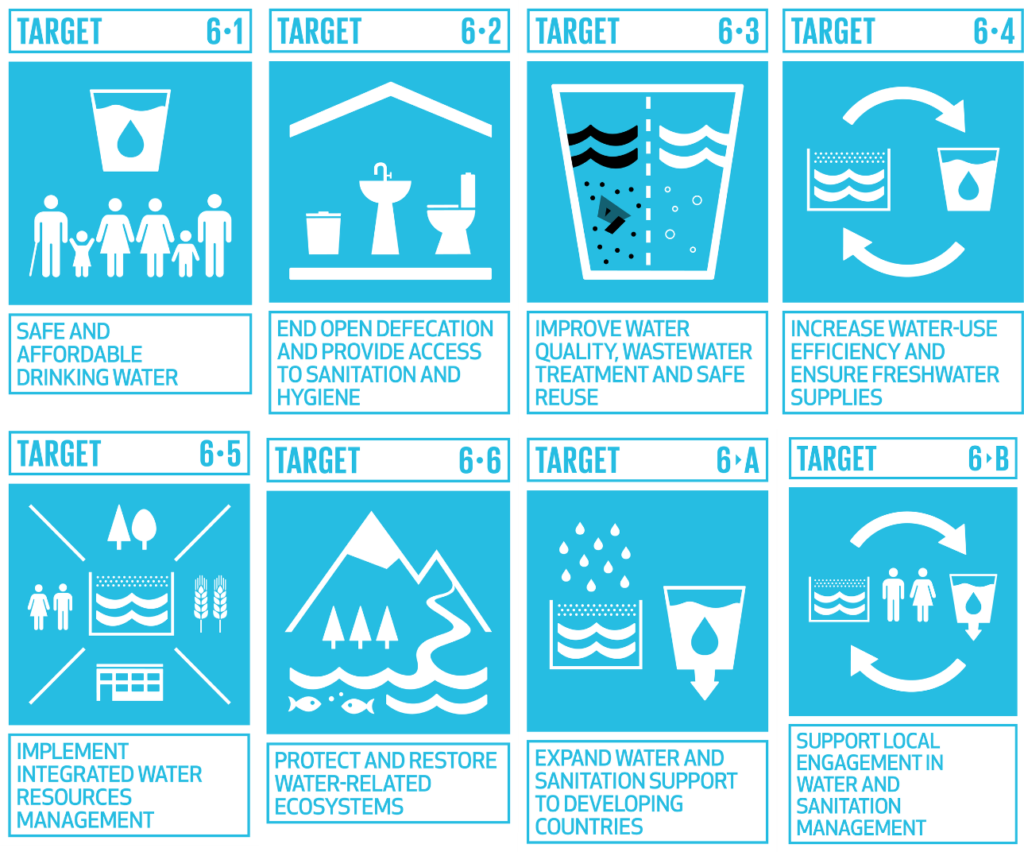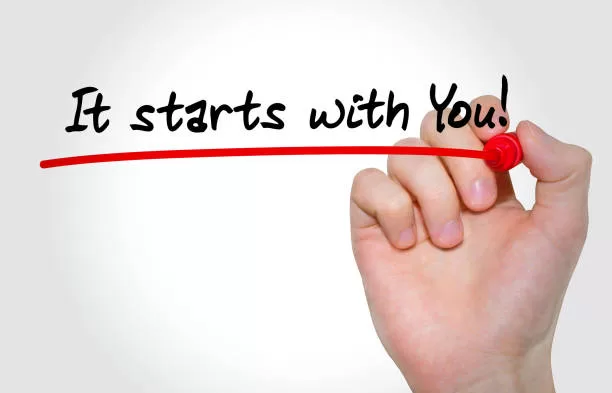
SDG 6 stands for “Sustainable Development Goal 6,” which is one of the 17 global goals established by the United Nations in 2015 as part of the 2030 Agenda for Sustainable Development. These goals are a universal call to action to end poverty, protect the planet, and ensure prosperity for all. SDG 6 specifically focuses on ensuring availability and sustainable management of water and sanitation for all. It addresses a range of issues related to water resources, water quality, sanitation, and hygiene. The primary targets and objectives of SDG 6 are as follows:
Goal 6: Clean Water and Sanitation
Targets:
- Access to Water and Sanitation: By 2030, achieve universal and equitable access to safe and affordable drinking water for all, and access to adequate and equitable sanitation and hygiene for all.
- Integrated Water Resources Management: By 2030, implement integrated water resources management at all levels, including through transboundary cooperation as appropriate.
- Water Quality and Ecosystems: By 2030, improve water quality by reducing pollution, eliminating dumping and minimizing release of hazardous chemicals and materials, halving the proportion of untreated wastewater, and substantially increasing recycling and safe reuse globally.
- Water Use Efficiency and Sustainability: By 2030, substantially increase water-use efficiency across all sectors and ensure sustainable withdrawals and supply of freshwater to address water scarcity and substantially reduce the number of people suffering from water scarcity.
- Integrated Water and Sanitation Services: By 2030, implement integrated water and sanitation services in all countries, particularly focusing on the needs of women and girls and those in vulnerable situations.
- Water-Related Ecosystems and Biodiversity: By 2020, protect and restore water-related ecosystems, including mountains, forests, wetlands, rivers, aquifers, and lakes.
- Water Cooperation and Participation: By 2030, expand international cooperation and capacity-building support to developing countries in water- and sanitation-related activities and programs, including water harvesting, desalination, water efficiency, wastewater treatment, recycling, and reuse technologies.
Importance of SDG 6:
Sustainable Development Goal 6 is crucial for ensuring the well-being and development of societies while safeguarding the environment. Access to clean water and sanitation is fundamental for human health, dignity, and quality of life. Improving water management practices and water quality contributes to environmental sustainability, enhances ecosystem health, and helps prevent water-related conflicts. Achieving the targets set forth in SDG 6 requires collaboration among governments, businesses, civil society, and communities to promote responsible water use, reduce pollution, and ensure equitable access to water and sanitation services for all, with a focus on marginalized and vulnerable populations.
In summary, SDG 6 aims to address water-related challenges, promote sustainable water resource management, and ensure universal access to clean water and sanitation, all of which are essential components of achieving a more just, equitable, and sustainable world by 2030.

Individuals play a significant role in contributing to the achievement of Sustainable Development Goal 6 (SDG 6) by taking actions that promote responsible water use, improved sanitation, and better water resource management. Here are some ways individuals can contribute to SDG 6:
- Conserve Water: Practice water conservation in daily activities, such as turning off the tap while brushing teeth, fixing leaks, using water-efficient appliances, and not overwatering gardens or lawns.
- Reduce Pollution: Dispose of waste properly, especially chemicals and hazardous materials, to prevent water pollution. Avoid littering and participate in local cleanup efforts to keep water bodies clean.
- Use Water Responsibly: Be mindful of water use in daily tasks like bathing, washing dishes, and doing laundry. Avoid wasteful practices and adopt water-saving habits.
- Support Safe Sanitation: Ensure proper disposal of waste, including human waste, to prevent contamination of water sources. Encourage the use of improved sanitation facilities and proper waste management.
- Promote Hygiene: Practice good personal hygiene and encourage others to do the same to prevent waterborne diseases and improve overall community health.
- Educate and Raise Awareness: Spread awareness about the importance of clean water and sanitation in your community, workplace, and social circles. Educate others about the significance of SDG 6 and the actions needed to achieve it.
- Advocate for Change: Engage with local governments and community organizations to advocate for policies and initiatives that promote water conservation, sustainable sanitation, and equitable access to clean water.
- Support Water-Smart Products: Choose products and services that are water-efficient and environmentally friendly. Support businesses and products that prioritize sustainable water practices.
- Participate in Community Projects: Get involved in local water-related projects, such as river cleanups, water conservation campaigns, and initiatives to improve sanitation facilities in underserved areas.
- Reduce Single-Use Plastics: Minimize the use of single-use plastic products that contribute to pollution and harm aquatic ecosystems. Use reusable water bottles and containers instead.
- Support Water-Related Charities: Contribute to organizations and charities that focus on providing clean water and sanitation services to communities in need, both locally and globally.
- Adopt Sustainable Landscaping: If you have a garden or outdoor space, choose native plants that require less water and use mulch to retain moisture.
- Learn About Water Issues: Educate yourself about local water challenges, such as water scarcity, pollution, and access disparities. Understand how these issues affect your community.
- Engage in Behavior Change Campaigns: Participate in behavior change campaigns organized by governments, non-profits, and international organizations to promote water conservation and sanitation practices.
- Lead by Example: Demonstrate sustainable water practices in your own life, which can inspire others to follow suit and create a positive ripple effect.
Collectively, the actions of individuals can make a significant impact on achieving SDG 6 and ensuring a sustainable future with equitable access to clean water and improved sanitation for all.
0 Comments